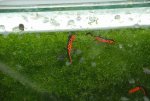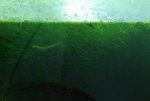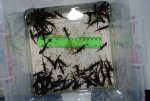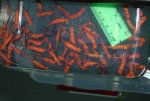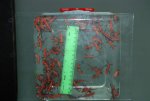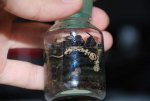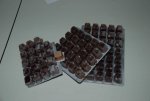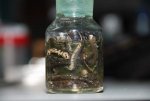Tudor
New member
Dear all,
I'm sorry for my long absence, but I suppose you will forgive me, because I was terrible busy with my researches.
Still, this year was a good year for my breeding colony of Cynops orientalis. I manage to raise 102 little newts. The sad news is that originally were more than 250, but they died shortly after the metamorphosis.
The strange think was that the newts died on the land, in a huge naturalistic terrarium and with plenty of suitable foods around.... They just did not make it.
So, I decided to keep them aquatic, with tons of java moss and Ricia fluitans, Pistia stratiotis. Doing so, not even one newt died!
I fed them first with Cyclops and then with Artemia salina.
And now you can see the result
I'm sorry for my long absence, but I suppose you will forgive me, because I was terrible busy with my researches.
Still, this year was a good year for my breeding colony of Cynops orientalis. I manage to raise 102 little newts. The sad news is that originally were more than 250, but they died shortly after the metamorphosis.
The strange think was that the newts died on the land, in a huge naturalistic terrarium and with plenty of suitable foods around.... They just did not make it.
So, I decided to keep them aquatic, with tons of java moss and Ricia fluitans, Pistia stratiotis. Doing so, not even one newt died!
I fed them first with Cyclops and then with Artemia salina.
And now you can see the result

